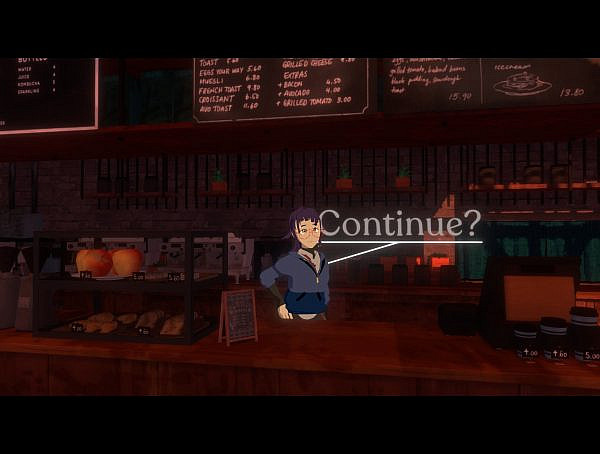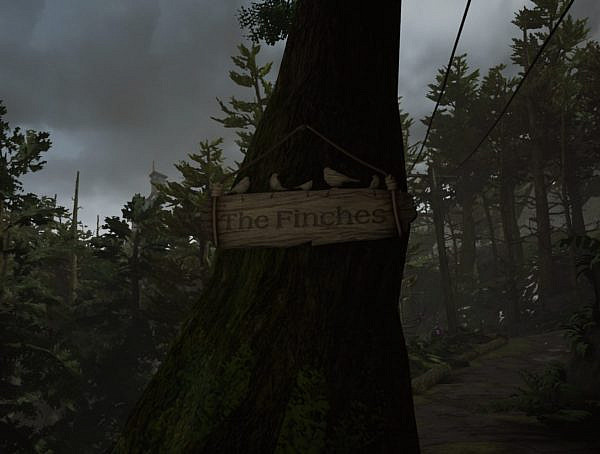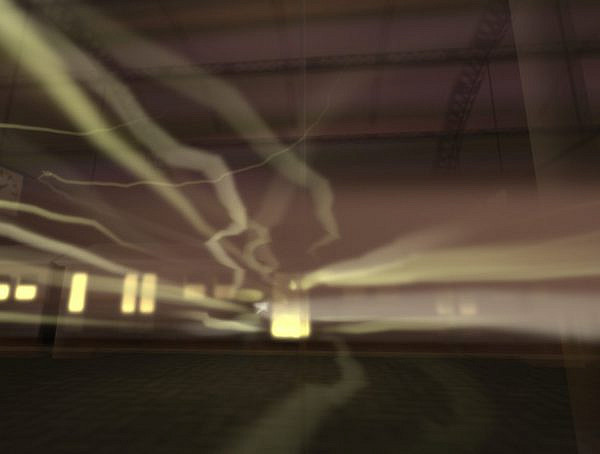Mona Bozdog and Dayna Galloway’s 2019 article ‘Worlds at Our Fingertips: Reading (in) What Remains of Edith Finch’ analyses how various literary techniques are used to provide a ‘hybrid literary/ludic experience’ in walking simulators (sims), such as in the 2017 game, ‘What Remains of Edith Finch’ (WRoEF). This is presented in comparison to traditional first-person games, which consist of definitive achievements and goals and also straight-forward gameplay mechanics. Bozdog and Galloway propose that WRoEF blends gameplay with different literary elements, aesthetic presentation of text and intertextuality. Each of these aforementioned elements provide a unique narrative layer in game, making it a profound literary experience.
Bozdog and Galloway further explain literary dimension to be a manifestation of the game’s themes and influences, heavy usage of literary genres, techniques and metaphors, and also the aesthetics of written text. Exceptionally, language is the artistic foreground of the game, rather than used in a purely functional sense. The authors exemplify this type of literary-heavy gameplay with the term ‘literary gaming’, coined by Astrid Ensslin. According to Ensslin, literary games make players utilize a different set of skills as they explore and interact within the game’s world.
In literary games such as WRoEF, many key gameplay elements are up to the player’s interpretation. For example, during gameplay the player can pick up notes, journal entries or clues, which are meant to aid in piecing together game’s key narrative points. Although ‘walking sims’ lack traditional gameplay mechanics, they are still considered games in a sense that the player has to maneuver in a 3-dimentional world with an external controller, make decisions to find paths and actively interact with in-game objects. Also, in some cases, such as in WRoEF, the player has objectives to proceed in game, rather than just exploring the environment.
Bozdog and Galloway pose WRoEF as a literary game by presenting it as a collection of self-contained, narratively rich stories. The game is structured around a frame narrative, telling a story within a story: Edith Finch’s son returns to his family house and has to investigate the deaths of each family member by unlocking every room in the house. Each room act as a self-contained story of how each Finch family member died. The player can learn about the various ill-fated characters of WRoEF through various written artifacts provided within game, blending literary and gameplay dimensions. Interacting with different objects in each room helps the player in getting to know the characters.
Each room also incorporates different narrative styles, mechanics, settings and genres, combining gaming and literary worlds even more tightly together. The authors exemplify this with presenting the rooms of Molly, Barbara, Gregory and Gus Finch. Molly’s room is found through discovering Jules Verne’s novel `Twenty Thousand Leagues Under the Sea´ in game. The novel alludes to the literary influences of Molly’s death and also foreshadowing the player’s forthcoming experience. Molly relives her death by narrating her story written in her diary, accompanied by lively gameplay mechanics, such as climbing, flying and swimming. The genre represented in Molly’s room is magic realism according to the authors. In Barbara’s room, her story is narrated in the style of horror genre. The narrator is akin to ´Tales from the Crypt’s´ television series, and her story derives from famous horror literature, comics and films. In Gregory and Gus’s case, written text acts as a guide in the stories of their death. The player must control a kite through floating texts in the sky, and direct toys in the bath water in order to move the stories forward.
In conclusion, Bozdog and Galloway present that walking simulators such as WRoEF are closely connected with literary genres and thus belong under literary gaming. WRoEF delivers a multi-faceted readerly and playerly experience by blending literary elements with storytelling and interactivity. Together with telling visuals and stimulating interaction schemes, WRoEF is actually more in-depth than most games with traditional gameplay.
The article ‘Worlds at Our Fingertips: Reading (in) What Remains of Edith Finch’ by Mona Bozdog and Dayna Galloway was published in Games and Culture: A Journal of Interactive Media. It can be read from https://doi.org/10.1177/1555412019844631.
The picture “Window to the outside world” by Scarlizz is licensed under CC BY-NC 2.0. https://search.creativecommons.org/photos/d9a7d63e-ba2b-4230-88cc-f5f7ab01a4db.
You might also like
More from Game Research Highlights
How do you want to do this? – A look into the therapeutic uses of role-playing games
Can playing RPGs contribute positively to your wellbeing? A recent study aims to find out how RPGs are being used …
Eldritch horrors and tentacles – Defining what “Lovecraftian” is in games
H.P. Lovecrafts legacy lives today in the shared world of Cthulhu Mythos and its iconic monsters. Prema Arasu defines the …
Are Souls Games the Contemporary Myths?
Dom Ford’s Approaching FromSoftware’s Souls Games as Myth reveals the Souls series as a modern mythology where gods fall, desires …















